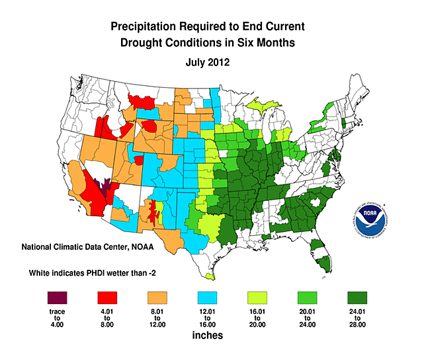
22 Sep 2012 Autumn plans reap summer sustenance
by Jan Spann
October generally brings cooler temperatures to Central Arkansas. And as we enjoy these fall days, now is the perfect time to think back on your heat-stroked garden of summer, because now is the time to dig into building a better garden. Fall and winter mark the time to plant trees, bulbs and most perennials. It’s also time to reconsider the dated notion that green lawns are the best use of earth and water.
In January, the USDA released a new Plant Hardiness Zone Map, which shows warmer zones throughout most of the United States. Central Arkansas is under the worst drought conditions in the state’s history, mirroring similar or worse issues throughout the U.S. breadbasket. With that in mind, now is the time to repurpose your sod lawn to conserve water while enjoying a new garden landscape.
As Arkansans, we love our lawns, but according to Save20 gallons.org, we can save 20 gallons of water a day by replacing just 1,000 square feet of lawn with better, water-wise options. The solution can be functional with sensory appeal, so — literally — dig in!
To celebrate fall and your new garden plan, enlist the family in these energetic outdoor activities. Start by stashing back newspapers and cardboard for several weeks and also pick up a couple of bags of playground sand at the local home center. During this time, map how much of your lawn you plan to reclaim for garden space. Soft curves have more eye appeal and are easier to mow around. Use spray paint to delineate these areas, and use a hoe to break up the grass into chunks. Spray these areas with Round-up, following the instructions.
Next, follow the painted path and place the papers and cardboard onto the lawn grass, making sure that you’ve covered the sod completely. Now use the sand to cover and weight down the papers. This method smothers the lawn and is effective for most types of turf. Now you wait for Mother Nature to do the work. Over the next few months, the paper stunts the grass, and the sand begins to mix with the soil, making it easier to remove the grass in spring. When you’re ready to plant the new garden area, pull out the grass and mix the sand into the soil.

The National Climatic Data Center at NOAA data shows that 24 to 28 inches of rain is needed to end the current drought cycle in the next six months, and the probability of receiving that rainfall is 10 percent or less, according to the Arkansas Drought Resource Center. These statistics don’t bode well for the perfectly mowed, lush green lawn, but they do offer a new paradigm of meadow lawns and drought tolerant gardens. Check with your county extension office to learn more about drought-tolerant perennials, shrubs and trees. In addition to saving water, these native choices invite butterflies, birds and other critters to enjoy your garden fare.
And next summer, you can celebrate these autumn activities by sipping iced tea instead of mowing your lawn.








